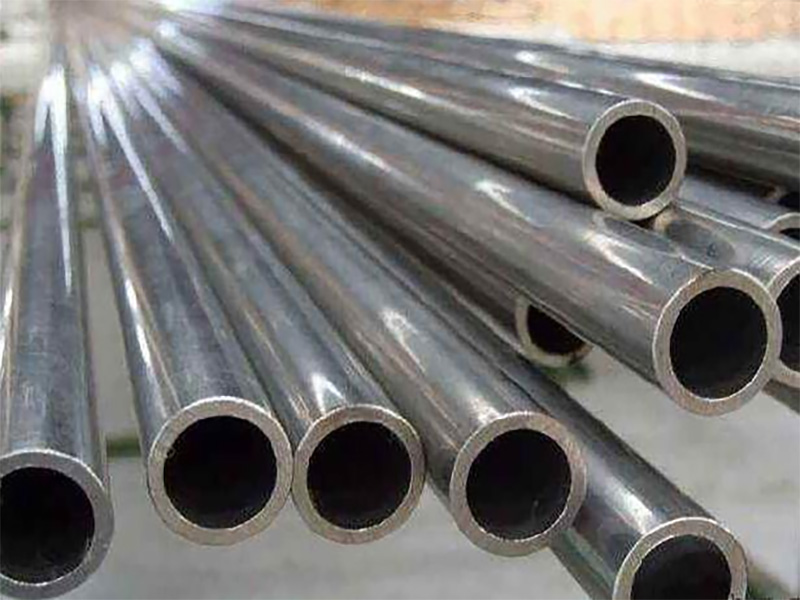

In order to overcome the shortcomings of high speed tool steel and improve the service life, heavy duty punching die can choose to reduce carbon and vanadium high speed steel 6 W6Mo5 Cr4V (6W6) and based on the composition of high speed steel, add a small amount of other elements composed of high strength and toughness die steel – matrix steel, Such as 65Nb steel, LD steel, 012AL steel, CG-2 steel and so on.

(1) 6W6MO5Cr4V (6W6) steel is a high strength and toughness high speed steel. Due to the reduction of the content and distribution uniformity of carbide, the bending strength, impact toughness and plasticity of 6W6Mo5Cr4V (6W6) steel are significantly improved while maintaining the hardness and wear resistance. Although the wear resistance is slightly lower, low temperature nitrocarburizing can be used to improve the surface hardness and wear resistance. Its heat treatment process is similar to that of high speed steel W6Mo5Cr4V2.common dies
(2) 6Cr4W3Mo2VNb steel 65Nb steel is taken from the basic composition of W6Mo5CrV2 steel after normal quenching. The carbon content of 65Nb steel is lower than that of high speed steel. The median carbon mass fraction is 0.65%, hence the name 65Nb. The effect of alloying elements in steel is similar to that in high speed steel. The addition of 3% Nb can form high stability carbide NbC, which can effectively prevent the growth of austenite grains and improve the mechanical properties and process properties of steel. This steel has better wear resistance and high temperature toughness, can replace Cr12MoV, W18Cr4V steel, used for heavy duty punching die and cold extrusion die, cold heading common dies

The forging and annealing process of 65Nb steel has good performance, and the heat treatment temperature range is wide. The quenching temperature can be between 1080 ℃ and 1180 ℃, and the tempering temperature can be between 520 ℃ and 600 ℃. After quenching at a lower temperature than the normal quenching temperature of W6Mo5CrV2 steel, the microstructure of the steel is characterized by the uniform distribution of fine undissolved carbides on the martensite matrix with lower carbon content. By adjusting heat treatment parameters, different strength, toughness and wear resistance can be obtained to meet the performance requirements of different common dies. Heat treatment process of 65Nb steel: 1080~1180 ℃ salt bath furnace heating (15~20s/mm) oil quenching, 520~560 ℃ tempering twice, hardness 57~63 HRC.common dies
(3) 7Cr7Mo2V2Si (LD) steel LD steel contains more carbon, cobalt and vanadium than 65Nb. Vanadium can refine grain and improve wear resistance. Therefore, its compressive strength, bending strength and wear resistance are higher than 65Nb due to its good strength, toughness and wear resistance, so it is suitable for manufacturing all kinds of heavy duty molds.
Recommended heat treatment process for LD steel: 850 ℃ preheating, 1100~1150 ℃ quenching; After cooling, the oil is tempered at 530~570 ℃ for 2~3 times, 1~2 hours each time. The hardness is 57~63 HRC.
(4) 5Cr4Mo3SiMnVAL (012AL) steel 012AL steel is added with 0.3~ 0.7% aluminum in order to refine the grain size and improve the impact toughness and hot working plasticity of the steel, and Si is added to strengthen the matrix. 012AL steel has high strength and toughness, good comprehensive performance and strong versatility. It is a cold and hot die steel. Its bending strength and deflection are higher than that of W18Cr4V high speed steel. It can be used as blanking die for medium thickness sheet and all kinds of cold and hot working common dies.
The recommended heat treatment process of 012AL steel is as follows: 1090~1120 ℃ salt bath furnace heating (30s/mm) oil quenching, 510 ℃ tempering twice, oil cooling for 2 hours each time, hardness 60~62 HRC.

(5) Adding Ni to the composition of 6Cr4Mo3Ni2WV steel CG-2 steel strengthens the matrix, improves the toughness and high temperature properties. At the same time, increasing Mo and decreasing W can reduce the segregation of carbide. Cg-2 steel has high strength and toughness, and can maintain good toughness even after heat treatment to high hardness, which solves the reasonable coordination between high hardness and toughness. But the forging plasticity is poor and the hardness is high after annealing. It can also be used for blanking die of medium thickness sheet and all kinds of cold and hot working common dies
Heat treatment process of CG-2 steel: quenching temperature 1100~1140 ℃ heating (20S /mm), oil cooling, 540 ℃ tempering twice, 2 hours each time, air cooling, hardness 60~62 HRC.

For Further Details,Please Feel Free To Contact Us: